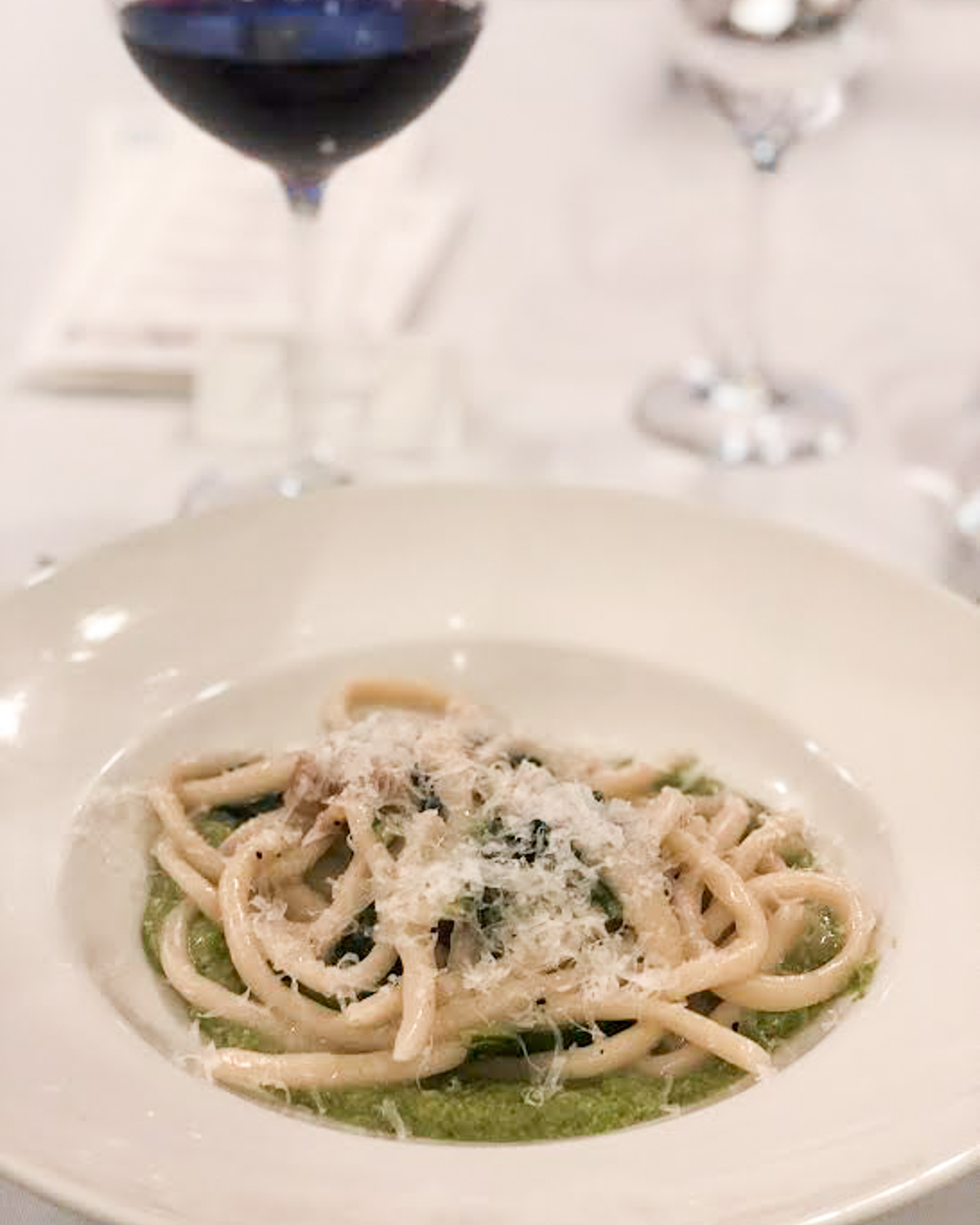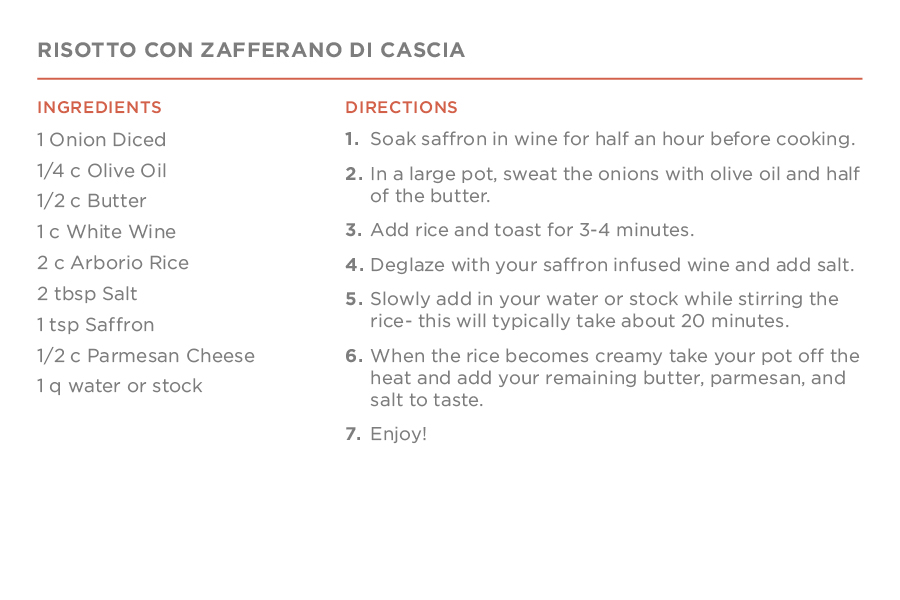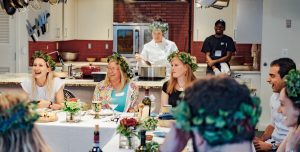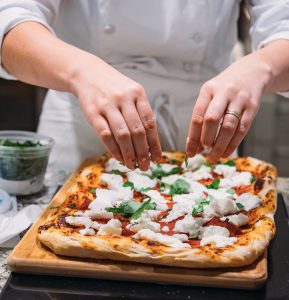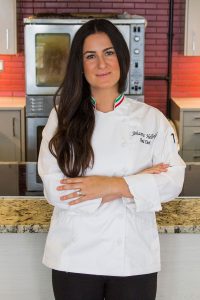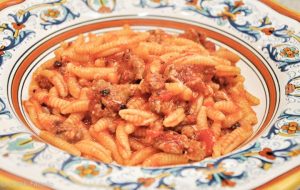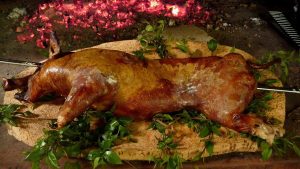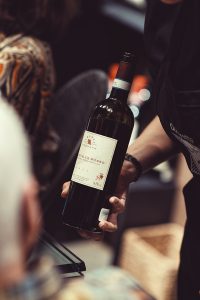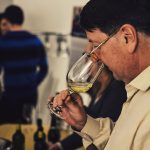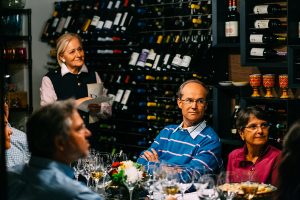Editor’s Note: This cookbook contains numerous delicious recipes. To read about our efforts to recreate one of them – Ruhlman’s classic Five Layer Lasagna – click here. Spoiler alert – it was delicious!
Over the past few weeks our already outrageous cookbook collection has grown by at least sixteen additions with more set to deliver every few days for the next few weeks. Fueled by the anxiety of having too much time on our hands and the need to feel productive, as well as an almost compulsive obsession with learning about the world through food, my husband, Scott, and I (with the help of the rest of the family) have set ourselves to the task of poring over these books for new ideas, ingredients, and recipes, and recreating their contents in our own kitchen. The result has been a house that smells different from one meal to the next, several pairs of pants that I now only look at longingly, and an incredible appreciation for what we have come to regard as the most important ingredient we have at our disposal- time.
Through the many tomes we’ve combed through on a daily basis, none have embraced this concept as strongly or with as much deference as Michael Ruhlman’s From Scratch. In a moment when the world is in complete chaos, it’s comforting to read through these pages and gain a new appreciation and understanding of what it means to cook and to be cooks. As Ruhlman says, “cooking made us human and I believe that cooking can keep us human.” (Ruhlman, 12). Looking through his recipes and his ideas it becomes clear that this is not merely a gimmick or a catchphrase- it is the driving force and motive behind this particular collection of recipes and the broader theme of the rest of his works.
The book itself is made up of ten distinct chapters each focused on a particular dish or meal that can be made entirely ‘from scratch’. These dishes are not complicated or fussy, rather they center on comfort foods and classics, foods that many people are already accustomed to eating and possibly even to cooking but with a depth of scope found in few other places. By his own account, Ruhlman’s goal here is to expand upon familiar concepts as he believes through “exploring several, familiar, staple meals, we can learn just about everything we need to know in order to cook, well, anything.” (Ruhlman, 12) True to his word Ruhlman uses these ten base recipes as a means to explore not just the end result of the dishes themselves, but the complexity of the ingredients that go into making them, ways to simplify parts of those ingredients to tailor the recipe to your particular time or skill constraints, and ways to apply those ingredients and skills learned to future recipes.
Take for example the chapter on Roast Chicken, a dish that by his own account “scarcely needs its own recipe” (Ruhlman, 28). Rather than providing a single page account in which readers are instructed to turn on their oven, salt a chicken, place chicken in oven, and wait, Ruhlman uses this chapter as an opportunity to talk about using the chicken to flavor its sides by creating a pan sauce from the remnants of the cooked bird, taking the bones and creating your own simple chicken stock (so easy you can ‘do it in your sleep’), and then how to make chicken soup using the leftover pieces of chicken from dinner and the stock you made from that chicken’s bones. For those with less time on their hands he suggests a completely unfussy shortcut version of his ‘scratch’ meal that relies on a store-bought rotisserie chicken and chicken broth. For most chefs and cookbook authors this would likely be considered cheating but as Ruhlman charmingly and forgivingly mentions throughout his pages “from scratch is an attitude, not a recipe or a rigid set of instructions.” (Ruhlman, 24)
At this point in time the levity, insight, and poignancy with which Rulhman attacks his recipes throughout this book come as a welcome relief. It becomes clear both through reading and cooking your way through his pages that there is no judgement to be found either from the author or the recipes themselves. While there is always an idea of striving for perfection, even a lasagna that only turns out halfway* the way you intended, or uses half store bought and half scratch made ingredients, is still lasagna and is still going to be pretty darn good. While the chapters themselves may seem simple, and many of the base recipes are, each dish is only as simple as you want to make it and the pages are full of intriguing sauces, stocks, and ways to leverage your leftovers into delicious meals unto themselves. The lingering sentiment from this book for me has been Rulhman’s musing about what it means to be ‘from scratch’, what qualifies us to take pride in our cooking, and what we should strive for. His answer is to ask yourself ‘’Is this the best I can do with the ingredients on hand, the time I have, and the energy I feel like expending?” (Ruhlman, 13). No single part of that answer is more important than the other; for right now, sometimes the act of cooking is enough, whatever your ingredients or results may be.
Recommended for: Confident beginners and experienced home cooks looking for new inspiration. Ruhlman has chosen recipes that can lead to perfection but don’t require it and strikes a good balance between creating intricate recipes to challenge experienced cooks and thoughtful shortcuts so as not to intimidate beginners.
Ease of Recipes: Moderate. A few of the recipes rely on a little bit of practice and know-how but the majority are a ‘choose your own adventure novel’ of difficulty as he suggests ways to cut corners or supplement your from scratch cooking with store bought items that won’t sacrifice the quality of the overall dish. The recipes are also written in a different format than most traditional cookbooks- Ruhlman doesn’t list out step by step procedures for each dish but adopts more of an essay format wherein one step leads into the next, and the next until you have a fully completed dish. While not at all a bad thing, and definitely lends itself to a more enjoyable cookbook reading experience, I caution anyone attempting to make these recipes to read them through in their entirety at least once as it’s easy to miss ingredients or steps if you’re skimming.
Overall Rating: 4/5 : This book is an absolute pleasure to read and has some really thoughtful and helpful recipes and insight into why you take certain steps to cook things. The writing style is clear, direct, and yet has moments of levity and humor that aren’t often found in cookbooks. The recipes are interspersed with personal anecdotes, thoughts and lessons on food and food culture, and endless amounts of encouragement. While the majority of the chapters are based around fairly simple recipes, Rulhman brings new insight to the creation of those dishes, offering readers a chance to leverage their understanding of one skill and apply it to countless other dishes. While this book may not contain the most exciting range of recipes it’s hard not to get excited by the way Rulhman takes even the most daunting tasks and makes them feel not just possible but easy.


















